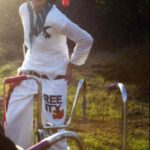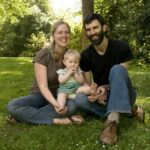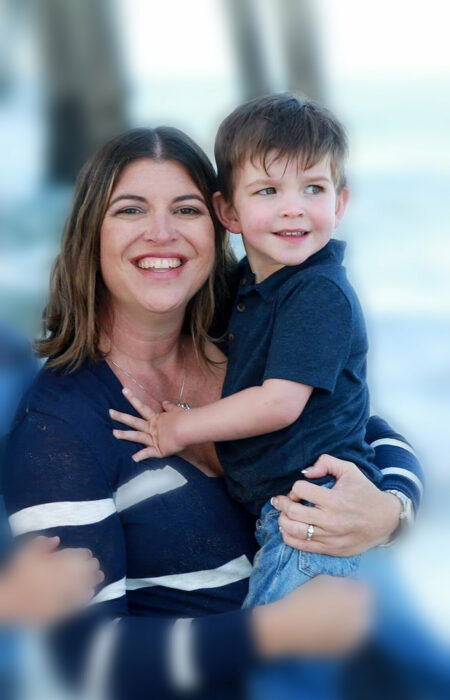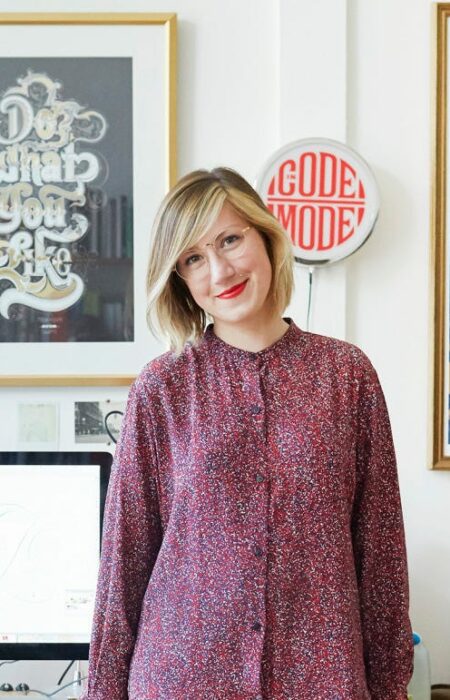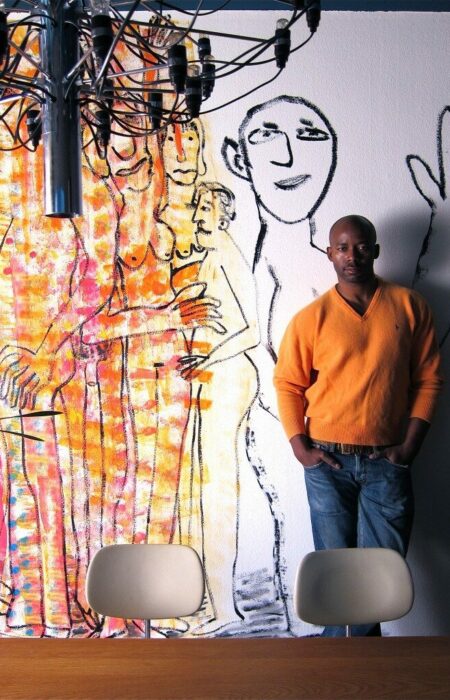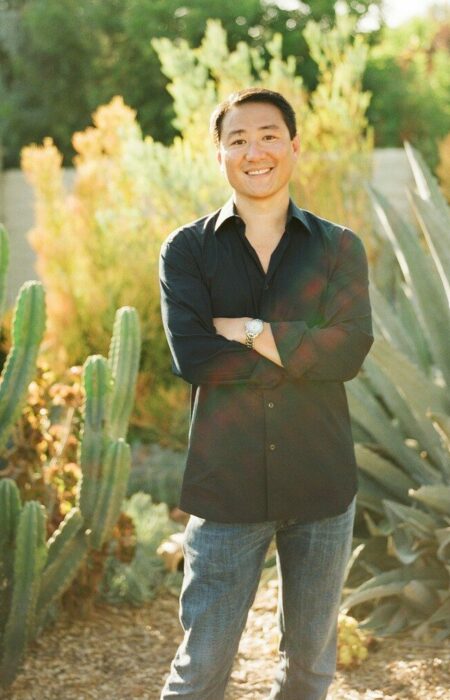Nine months after our first interview, fashion designer Elizabeth Kiester has delivered the next phase of her Wanderlust line and global design vision. With her innate drive as a former New Yorker and the compassion and patience she has learned from the Cambodian people, Elizabeth has opened a second store in Phnom Penh, launched an e-commerce site, and gained a rapidly growing global following who applaud her gigantic leap of faith. She’s witnessing the blossoming of a revived creative culture in her adopted homeland, and she’s inspiring a bruised post-recession Western society struggling to find its mojo. Through her support of local craftspeople and her uplifting fabrics and designs, Elizabeth is giving life to hope and happiness in the world.
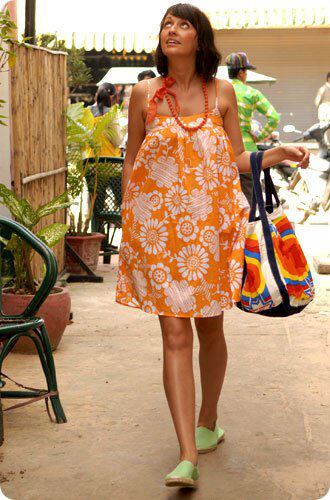
Maui dress from Wanderlust, design by Elizabeth Kiester
Find an expanded interview with Elizabeth Kiester in my new book Field Trip:Volume One, available on Amazon here! Or read more about my new book here.
So we’re approaching not quite a year since we last spoke, and you’ve made huge headway in carrying out your vision. Tell me about your progress since our first interview last March.
Phew! It’s been quite a road! Well, so many things have happened since our last talk! I got myself an amazing business partner who has helped me enormously in terms of understanding business, growth, opportunities and operations; I opened a beautiful store on my DREAM street in bustling, burgeoning Phnom Penh, our capital city; and I just launched an e-commerce site, one that I am super proud of and excited about. Oh, and it looks like I will be doing a small collection for a major U.S. retailer for summer 2010, an exclusive showcase of Wanderlust and ‘Made in Cambodia’ fashion products! So excited about this!
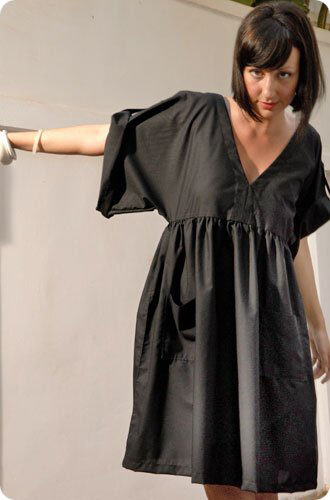
Kyoto dress from Wanderlust, design by Elizabeth Kiester
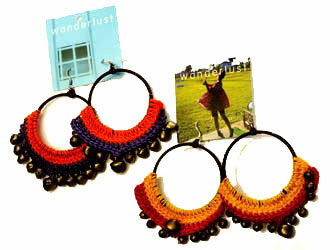
Earrings from Wanderlust, design by Elizabeth Kiester
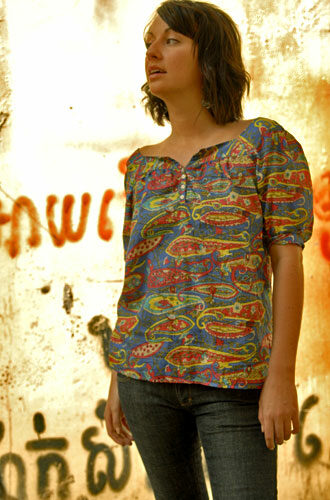
Biddleford pool top from Wanderlust, design by Elizabeth Kiester
Let’s go into some detail about your new shop in Phnom Penh. How did this come about, and how are you managing operations of your two stores?
Isn’t it amazing how sometimes things just fall into your lap? Like all the stars align, and you’re the beneficiary of a good stroke of luck and great timing (knock wood!!)? My friend here in Siem Reap, Kethana, owns amazing Khmer restaurants in both Siem Reap and Phnom Penh. Her location in Phnom Penh, on the coolest street in town, had an adjoining storefront that she had been using for storage and as a little apartment for her and her husband to stay in when they would go down there to check in on the restaurant. And the street just blossomed around her, and she thought, “Hmmm, why not rent it out as a shop space?” And she called me and offered it to me, and that was it. I jumped at the chance. Street 240 is the destination for shopping, eating, hanging out. And it keeps growing and blooming, and I got really lucky to have a spot smack in the middle of the action. And I knock wood every single day.
I will be honest — dividing my time between Phnom Penh and Siem Reap has been a challenge. We are about a six hour car/bus ride between the cities. Fortunately, they are now offering four flights a day back and forth, but this can be costly. So I try to be strategic with my schedule and go down to Phnom Penh at least once a month for a stretch of time — three or four days — and re-merchandise the store, check in with customers, go fabric shopping, get updates from my amazing shop girls, stock up supplies that are not available in Siem Reap, swing by the NGOs that I work with. I am always armed with a to-do list as long as my arm, and I am running around like a looney in the back of a tuk-tuk, eating in between stops. Not that different from my life in New York City, where I spent many evenings coming home from work at 11:00PM, eating a slice of pizza in the back of a taxi. As we say here in southeast Asia, “same same, but different.”
Wanderlust store in Phnom Penh
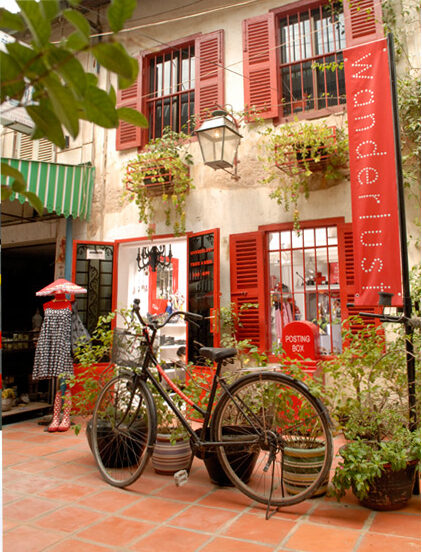
Exterior of Wanderlust shop in Siem Reap
So the big news of late is your new e-commerce site that you launched in December! What has the response been so far?
Oh, my god, it’s been quite amazing. I’ve gotten so much positive, energized feedback, I am frequently fighting back tears! Doing the e-commerce site was an enormous undertaking, filled with challenges and obstacles that I never anticipated. Like power outages here in Siem Reap for eight hour long stretches for consecutive days (no sewing, no uploading, no designing, no nothing but watching the clock — battery operated — and panicking). Fabric quantity issues. Unknown holidays that closed everything for days at a time. The list goes on and on and on. So ‘birthing’ this site and finally getting it up and live and in the face of all of this, to accept all this incredible feedback was so moving to me. I can’t even really express it. I am awestruck by people’s generosity and kindness.
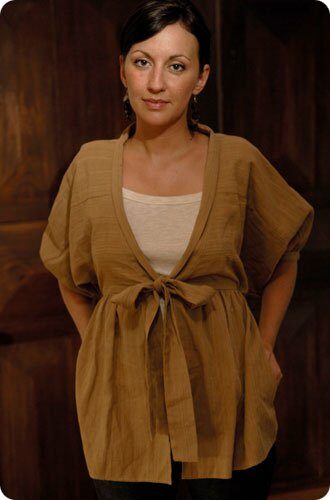
Tie-front jacket from Wanderlust, design by Elizabeth Kiester
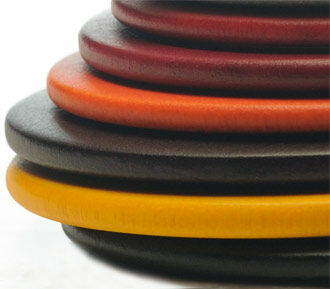
Matte wooden bracelets from Wanderlust, design by Elizabeth Kiester
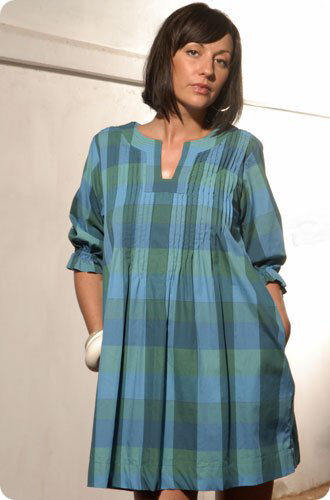
Palm Springs dress from Wanderlust, design by Elizabeth Kiester
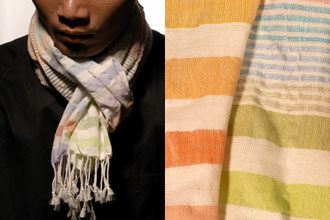
Small fringed scarf from Wanderlust, design by Elizabeth Kiester
I know you’d already established some relationships with local craftspeople, but have these relationships expanded further? What have been your biggest challenges?
There are so many, many more people I want to connect with, and when I can get some more breathing time, I will expand my network further and deeper. They’re out there, and I am always on the hunt! But I recently connected with this great NGO in Phnom Penh that trains the disabled on crafting, sewing and screen printing. We are selling their gorgeous handbags and cosmetic cases on the website. They’re awesome. I have them in the stores, and they fly off the shelves. We are also stocking their beautiful silk tie necklaces that look like candy to wear. Yummy!
In any developing country, the obstacles you encounter are probably very much the same. We in the west, particularly in the U.S., expect things to happen “5 minutes ago” and have a sense of urgency — real or imagined — that many places do not understand, nor can meet, or, quite frankly, find ridiculous! So I have tried to learn to slow down, breathe, learn patience and understanding, and express more empathy and compassion in everything I do. When talking about fashion or trying to express what it is I want to create in collaboration with all these wonderful craftsmen and villagers, I always have to remember there is no frame of reference. None. I show people photos, do drawings, pantomime. But keeping in mind that even if I draw, say, a large beach tote, they’ve never seen a beach tote, a beach, or a tote. So you’re working very much on the fundamentals, getting back to the basics, and building from there.
I have done some special projects for some stores in the U.S., and I must admit, I bristle when they give me some push-back — “oh, there’s a tiny blob of glue on this bracelet, so I am returning it to you,” “it wasn’t ironed correctly!” blah, blah, blah — because I think immediately, “There are no irons in the village. There’s no electricity!!!!” And “For chrissakes, the girl making that bracelet is disabled, working in candlelight, and I don’t think a microscopic dot of glue is life-shattering!” I’ve learned very quickly how sheltered and disconnected from the real world we from the west truly are. Because the real world is the developing world; the real world is where 90% of the population live in poverty. Ninety percent of the world’s wealth is held by 10% of the world’s population. True. I feel extremely protective of the Cambodian people and feel very familial towards them, and when westerners expect them to behave like Americans or treat them with disrespect, I shake my head in dismay!
Cotton hobo bag from Wanderlust, design by Elizabeth Kiester
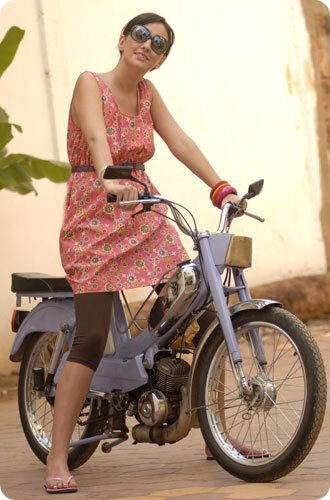
Tunisia tunic from Wanderlust, design by Elizabeth Kiester
Agra tie dress from Wanderlust, design by Elizabeth Kiester
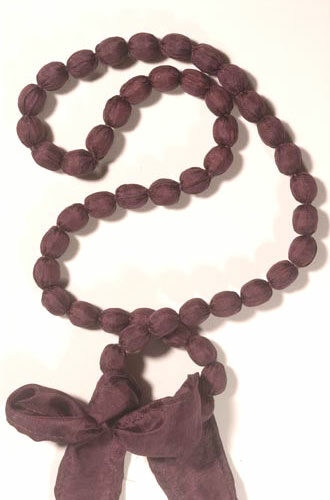
Silk bead necklaces from Wanderlust, design by Elizabeth Kiester
You have a lot of enthusiastic support, I think partly because people love the leap of faith you took, but maybe also because some of the most powerful bursts of creative energy in the world are in regions that are coming out of dark histories. You talked about the deep creative culture in Cambodia last time we spoke — what more are you seeing there?
I had this extraordinary conversation with my dear friend, Shannon, who lived here and is a beautiful writer. She was preparing to move back to the U.S. to finish a book she’s writing on Cambodia, and on the twilight of her move, I asked her what she is looking forward to in regards to living in the U.S. again. And she said what she missed the most about home was the concept of abstract thinking and having abstract conversations. And it really blew me away, and I really haven’t stopped thinking about it since. It was such an extraordinarily poignant and true thing to say. So deep and real. Abstract thinking is something that is so innate in us — it’s a freedom we were born with and nurtured on. When we were little, we were encouraged to think abstractly — express it with crayons, with words about our dreams of what we wanted to be when we grew up, to see movies about Superman and imagine we could fly. Yet here, abstract thinking has not been part of anyone’s dialogue since pre-Khmer Rouge. There are no dreams. You live in this moment and you figure out ways to survive your day, how to feed your family, how to find enough money to get some rice. There is no tomorrow. And yet with the dawning of a new Cambodia, I am seeing more and more young people thinking abstractly, expressing their inner worlds through painting, photography, even a little bit of fashion.
There was an art show a month ago at one of the most beautiful hotels in Siem Reap, the Hotel de la Paix, and they feature revolving shows of young Khmer artists. And this work was so beautiful. It was all charcoals of the changing urban landscape of Phnom Penh — the show was called Black — and it was so moving and so profound. Drawings and installations, really powerful stuff. It moved me to tears. A new show was just installed of large format oil paintings of flowers and insects — an explosion of color, tightly rendered images, dreamy and sexy and romantic, maybe in the style of Georgia O’Keefe. I was knocked out.
I am selling some stationery sets here at the shop of photographs done by children at a local orphanage who were given lessons on cameras and photography by world-renowned photojournalists, many who were here during the war covering it for their newspapers, who came back and volunteered their time to work with kids. These photos are extraordinary — mind-blowing! — scenes of Cambodian life through their eyes. Absolutely gorgeous. I am selling them like hotcakes — they are truly works of art. So I have hope and am energized that the freedoms we take for granted — the freedom to dream, to express, to have hope — are being instilled and learned by the new generation.
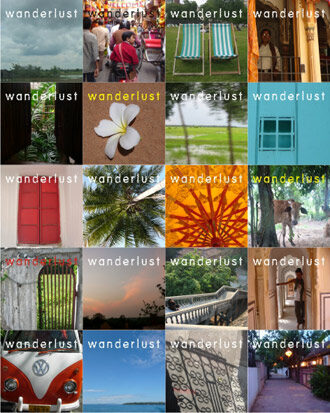
Wanderlust poster with happy images from Elizabeth Kiester
I was looking across your range of dresses, tops, bags, and so forth, trying to identify your fashion inspirations and influences. But what stands out most is that they all exude happiness, and maybe really a different viewpoint of how we should be living life. How has your work evolved this past year in expressing this global design language?
I have been thinking more and more about the concept of “hope” and how hope is the key to so many many things. During this financial crisis we’ve all been facing — and believe me, we feel it here in Cambodia: donations to NGOs are decreasing, tourism dropping, factories closing — hope is essential for getting us through the most challenging times of our lives. At risk of sounding super-corny, so forgive me in advance, I realize that clothing cannot give you hope, it doesn’t change how you live and how you operate, doesn’t cure malaria or any of it. But if you can surround yourself with sunshine-y things, bright colors, things that lift you up even if just for a few moments, then by all means, why the hell not? Why shouldn’t I wear a bright orange floral jumper in the rain? Why can’t I wear some silly cherry printed cheerful flip-flops if it gives me some notion of happiness and hope for a few seconds? Happiness and hope can be contagious, and I want that ‘disease.’ I want to intoxicate myself a little bit with something joyful and pleasurable. And, even better, our clothes directly help people. Leng and my whole team of wonderful, super-duper girls that sew for me, they have hope now for a more stable life, a notion of a better, happier tomorrow! Woo!
When I lived in New York, we all adorned ourselves in black all the time, and while there’s still a sinister, goth-y part of me, I am choosing to embrace lightness and energy right now. I have never looked at something from Marimekko and been depressed! Ever!
Lombok tunic from Wanderlust, design by Elizabeth Kiester
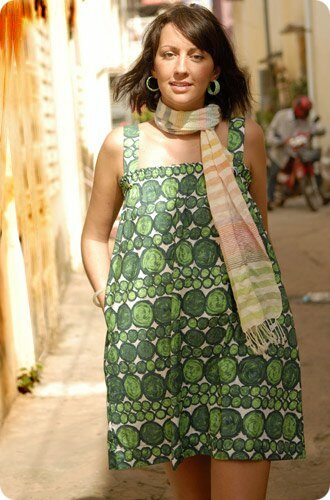
Mallorca dress from Wanderlust, design by Elizabeth Kiester
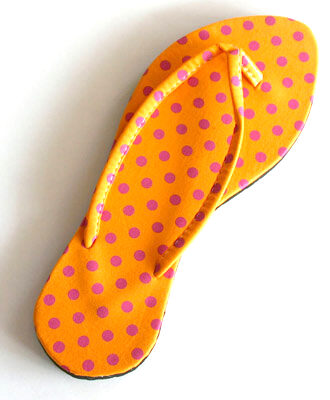
Orange polka dot flip-flops from Wanderlust, design by Elizabeth Kiester
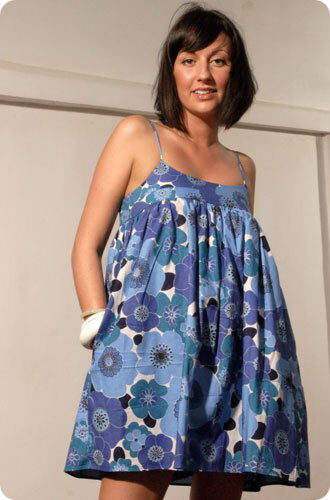
Roppongi dress from Wanderlust, design by Elizabeth Kiester
We were in the midst of economic upheaval last time we spoke, and you joked about maybe having to go work in a rice paddy one day. Are you feeling like you’re pretty well in the groove now, like your dream is pretty tangible? And what’s next on the horizon for you?
I think the minute you rest on your laurels is the minute you’re in big trouble. Someone recently said to me, “Eliz, you’re working too hard. You moved to Cambodia to chill out, to soak up the sunshine, to live a slower life.” And I thought, “I did? No, I didn’t!” I came here to create a business, one that could support me and my whole team here. And I will work my fingers to the bone for the next twenty years to ensure that sense of security and safety for all of us.
I am definitely in a groove now, but I have so many, many things to do, and I am still virtually a one-man band. I have my seamstress team and my extraordinary shop girls, a business partner who thankfully does all the critical operational stuff without whom I may crumble!!! But in terms of sourcing, designing, product development, research, fitting…it’s all me. And I am the type of person who is always on edge, and always moving quickly and hopefully efficiently to ensure that things stay on path. I have an enormous responsibility to my crew here, and I can’t stop for a second and forget the mission, the goal.
I would love to start wholesaling my stuff or finding licensees to make things for us that we can’t make here, like swimwear and some accessories. That would make me really happy.

Sumatra shirt dress from Wanderlust, design by Elizabeth Kiester
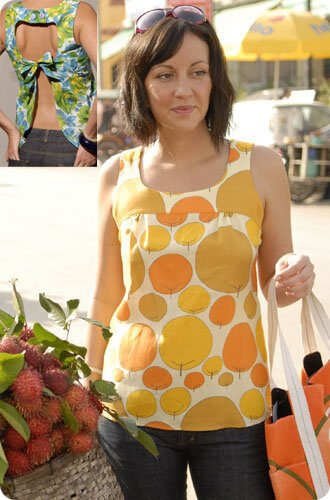
Tulum tie back top from Wanderlust, design by Elizabeth Kiester

Yoke tunic dress from Wanderlust, design by Elizabeth Kiester
As you continue building your new life in Cambodia, munching on Khmer snacks such as spiders and crickets, what sort of pep talk or advice would you give to anyone contemplating a similarly big change of lifestyle and leap of faith?
I really don’t see why someone shouldn’t! I think it’s important to do something for yourself and connect it on a deeper level, to find this hidden or overlooked piece of yourself and explore it. To let go of all the ‘stuff’ and liberate yourself from it. We all find excuses not to do something, we all can look for reasons to not do this, not do that. But the most colorful and interesting people I know or have read about or want to emulate are people who took this leap of faith, who said “to hell” with the conventional wisdom, who grabbed an opportunity to move themselves forward in a different direction, a new path. I know, or I am certain, that more and more people, in the face of the economic meltdown, are considering big life changes. And I think it’s a perfect time to do so.
I just finished this non-fiction book called Mountains Beyond Mountains by Tracy Kidder, about an American doctor who opens a clinic in the mountains of Haiti. A Harvard trained genius who could’ve easily opted for a seven-figure salary and all the trappings of wealth and a plush academic life. But he chose to open this extraordinary place, do three-hour house calls to the infirmed in small huts with no running water, flying back and forth to Boston to do research on infectious diseases that affect/infect developing countries like Haiti. And, yes, it’s exhausting and troubling, and he faces huge, overwhelming obstacles every single day (and surely he must have times where he longs for the comfort of a TV and delivery pizza). But, in essence, his life has been one of exemplary value, of lessons and extreme values, of human connection and true connection to his passion. And while I am in no way — NO WAY!!! — comparing myself to this amazing individual, his story gave me such energy and such drive and such inspiration. I want that same type of commitment to my passion, my drive, my soul.
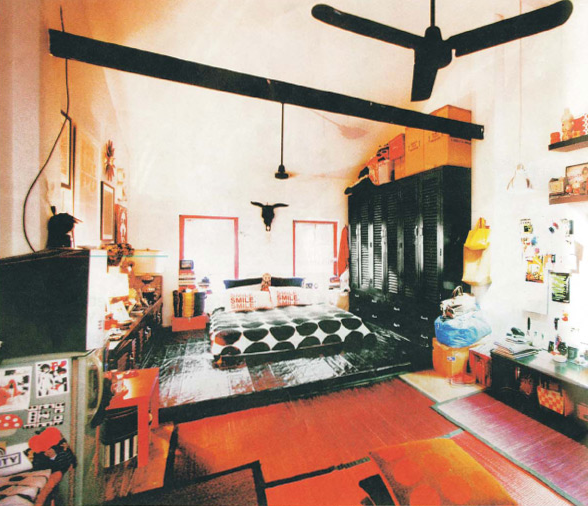
Elizabeth’s home above her Wanderlust shop in Siem Reap
In whatever quiet moments you have, do you feel like you now have a larger mission in life or that there’s a unifying theme or purpose in what you’ve undertaken?
All I know is that I want to be successful, a successful human being. And if I can be so by selling a few cute dresses and some cool accessories, then that’s all I really care about. To connect with people, my new friends here in Cambodia, to ensure I am living a life that is filtered through a lens of empathy and compassion and energy and drive — that’s the mission that I will be on forever.
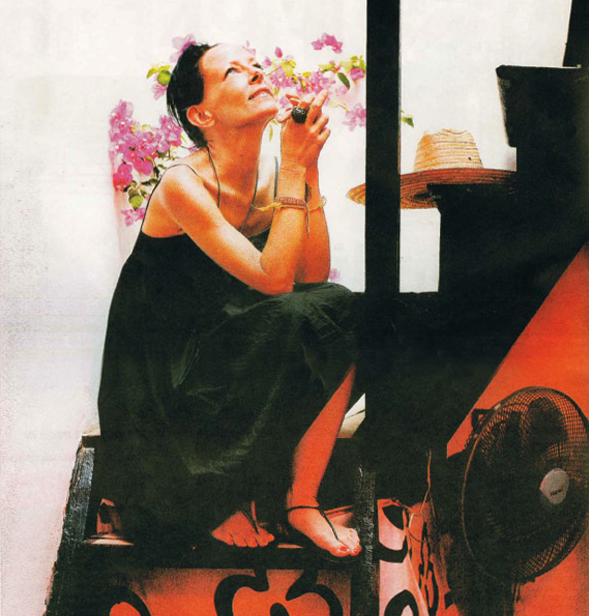
Elizabeth Kiester
Check out the full Wanderlust line plus Elizabeth’s images of Cambodia and travel recommendations on her website!
Share the love, post a comment!

